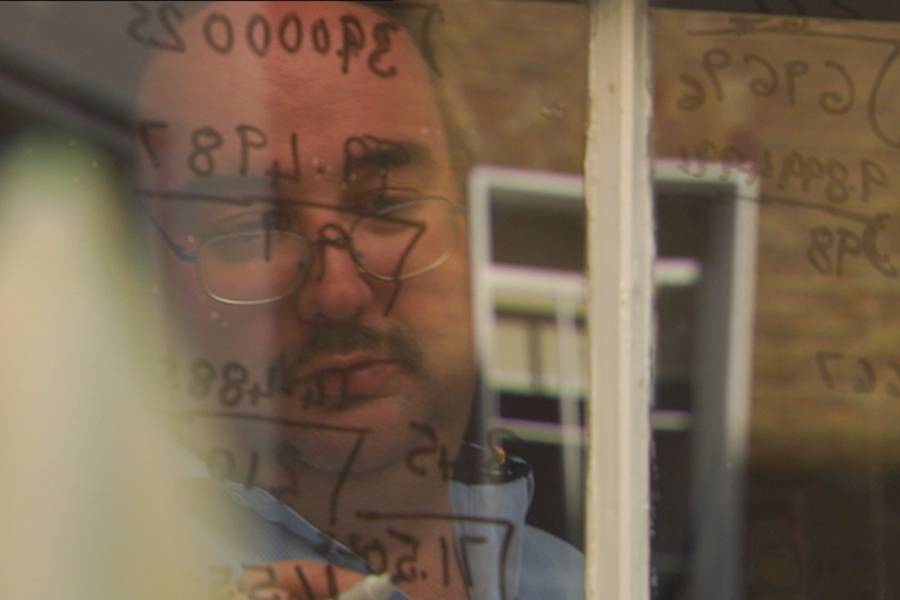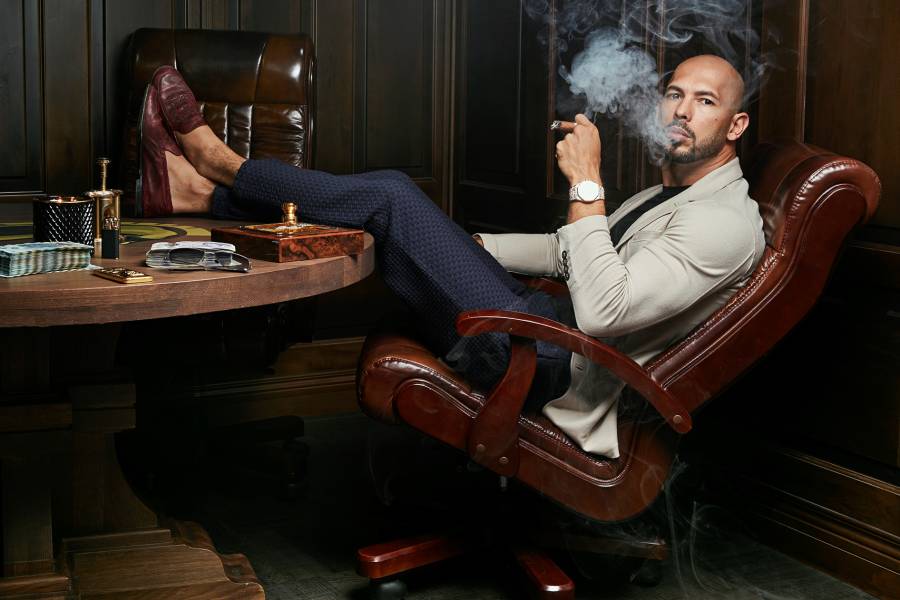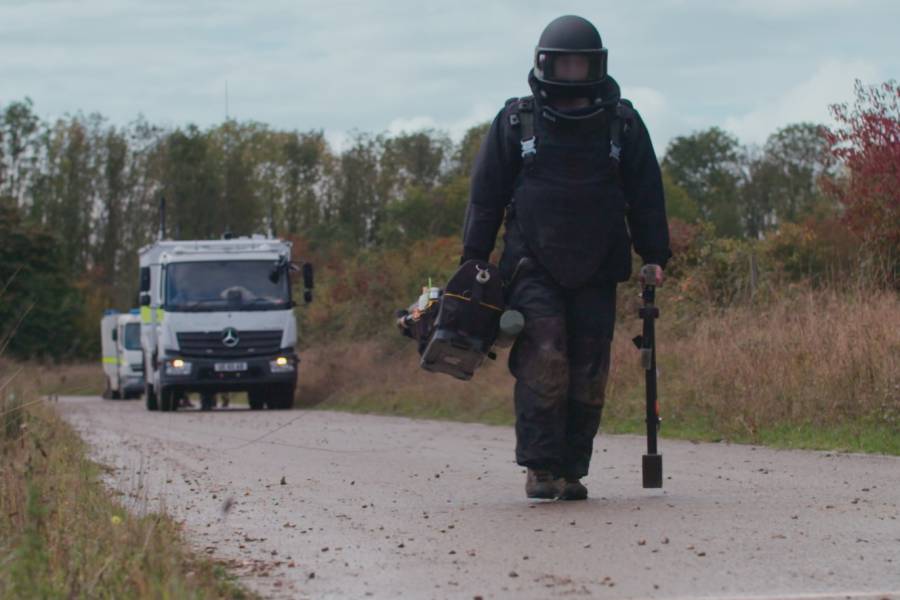
Beautiful Minds
Duration: 3 x 52'
Play Trailer Play Memory Masters Play A Little Matter Of Gender Contact SalesThis fascinating window into the brain approaches the huge scientific field of research through the most interesting and entertaining ‘research projects’, the Savants.
Currently there are around one hundred recognised Savants with genius-like talents worldwide. For all brain researchers the Savants are a fascinating window into the brain.
Episode 1: Memory Masters
Orlando Serrell from Virginia was 10 when he was struck by a baseball on his temple during a game. He lost consciousness for a while, but when he woke up again, everything seemed to be normal. Only a year later did Orlando notice that he could remember every single detail of every single day of his life since his accident. Every date, every day of the week, what he had for lunch and of what colour his sister’s socks were or what programme was on TV. Orlando, now at the end of his 30s, feels great – but the archive in his head grows from day to day.
Kim Peek from Salt Lake City is the“real rainman”. He doesn’t read books – he scans them. The visual system of his brain allows him to read one page of a book with one eye and the other page at the same time with his other eye, allowing him to memorise the whole content within 8 seconds. Kim records any data like a hard drive: melodies, names, historic dates, the calendar, the complete TV programme listings, every area code of every place in the USA, the road map of every state. But Kim pays a price for his mysterious abilities: as a child he was said to be strongly mentally disabled – until he could recite his first encyclopedias at 4 years old. At 50 years old now, the Mega-Savant, (as scientists call him in awe), still can’t live on his own.
Howard Potter, who attracted attention when he was a child because he could calculate the exact number of peas on his plate just by a glance, is still dependent on his mother’s help in daily life and has been for over 40 years. Howard extracts square roots like others count the fingers of their hands, he loves prime numbers and even more the endless reservoir of soccer results. “Howard doesn’t know the excitement of scoring a goal, his mother says, He’s only interested in the numbers”.
Where does memory come from? Why do we remember some things and forget others? What kind of filters are responsible for recording some data and deleting others? Or do we record everything, like Prof. Gerhard Roth of the university of Bremen says? And if we record everything – how can we open the secret chambers of our memory like the savants do?
Episode 2: The Einstein-effect
Matt Savage was strange as a child. Until he was 4 his mother wasn’t allowed to touch him and at the slightest noise he got a screaming fit. Matt’s parents soon got the diagnosis: Matt was said to be an autistic child. One had to accept the disconnections of his brain that led to extreme behavior, the pediatrician said.
When he was 6, Matt Savage learned to play piano nearly overnight. By 7 he began composing jazz and in the same year his first CD with his own composition was released. A day before his 13th birthday he had a gig in New York’s most famous jazz club, the Birdland. Famous jazz players like Chick Corea call him a musical talent of the century. “But where,” asks Dr. Darold Treffert, (awarded to be one of the hundred best physicians of the USA and one of the most important Savant-experts worldwide), “does Matt Savage take his knowledge about music from? Is there a musical chip in our brains, which already knows everything about music? That we just don’t have access to? How can Matt know all these things about music when he never learned them?”
The abilities of Stephen Wiltshire are just as tremendous. The man from London, diagnosed as an autistic child by the age of 3, flies in a helicopter over Rome for 45 minutes, after that he is supposed to draw a 5 meter long aerial panoramic picture of the Eternal City – from memory. Because he is a drawing-savant, (who was able to fulfill a similar feat in his hometown London), he was even able to remember the exact number of windows of important buildings.
The brain researcher Prof. Michael Fitzgerald from Dublin draws upon the theory that there is a interrelation between the extraordinary creativity and the disconnections in the autistic brains. Einstein, Newton, Mozart and Beethoven, says Fitzgerald, were such extreme gifted people, because their brains weren’t wired appropriate – like the brains of Matt Savage and Stephen Wiltshire. At the university of Sydney, Prof. Allan Snyder tries to disable parts of the brains of his probands for a short time to get more creativity out of them: “It´s fascinating,” Snyder says, “that you have to switch off some parts of our brains to unfurl our inventive powers”. But Snyders experiments are highly contended.
Episode 3: The Big Difference
Prof. Simon Baron-Cohen is not afraid of making himself unpopular. The professor of the university of Cambridge is said to be one of the greatest experts in autism research in the world. He argues that there are serious differences – at least on average – between the male and the female brain. The female brain is an ’E-brain’, he says, ’E ’ for empathy, the ability to put oneself in the emotional position of others. On the other hand men are more likely to be ’S-brains’, which stands for ’System ’: motor, computer etc. In extreme cases this male brain-configuration leads to autism and other malfunctions, more likely to become a savant, possessing wondrous abilities but social deficits.
Baron-Cohen’s findings break with the socially requested dogma that there are no big differences between the male and the female brain. The dysfunction of the extreme male brain can bring up masterminds and monsters – and savants.
As a little girl Temple Grandin didn’t speak at all. Later the other kids in her school laughed at her, because she seemed to repeat words and sentences she picked up like a tape recorder. Thanks to her brainpower she was able to learn the language of men like others learn foreign languages. In contrast Temple feels at home in the language of animals, who – like her – think in pictures and not in words. Prof. Baron-Cohen guesses that a male ’S-brain’ and not a female ’E-brain’ works in Temple’s head. Today Dr. Temple Grandin is the most important woman in the steak and burger obsessed USA. She designed more then half of all cattle breeding farms of the biggest meat producing nation in the world, because she knows the fears of cows, pigs and sheep by heart. But the thoughts and minds of average people are still a mystery to her, in her life she will never be able to fall in love.
It’s the same with Christopher Taylor. He wouldn’t be able to find the way to the pub in the village he has been living in for 20 years, but Christopher reads newspapers in almost 25 different languages. Scientists like Simon Baron-Cohen think that an overdose of the male sex hormone testosterone in the time when the embryo evolves, is responsible for extreme forms in the male brain that leads to autism and in some cases to the abilities of the savants.
Are men and women principally wired differently? Are men more likely to be aggressive and violent because areas deep in their brains make them that way? Is the average female brain less system-talented but good in communication, balancing and sympathy?


Also in this genre

Face The Consequences - Format

Life On The Psych Ward

Living with the Boss - Format

Hannah Spearritt: Me & Breast Implants

Prisoners' Wives: Visiting Hours

Stacey Dooley Investigates: Kids Selling Drugs Online

Doom Scroll: Andrew Tate & The Dark Side of the Internet

Paul O'Grady's Little Heroes

The Great British Spitfire Restoration

Stacey Dooley: On The Psych Ward

Sheridan Smith: Becoming Mum

Inside the Spitfire Factory

Stacey Dooley Investigates: Sex In Strange Places

Growing up Poor: Britain's Hidden Homeless Kids

The Knowledge: The World’s Toughest Taxi Test

Growing Up Poor: Britain's Breadline Kids

Inside the Bruderhof

Stacey Dooley Investigates: Gypsy Kids In Crisis

Heal Me In The Name Of Jesus

How To Be A Young Billionaire

Britain's Child Drug Runners

Living With My Supersized Pets

Stacey Dooley Investigates: Spy Cam Sex Criminals

Stacey's Lockdown Heroes

Britain’s Refugee Children

National Trust: My Historic Home

Bring Back the Bush: Where Did Our Pubic Hair Go?

Poundland: How Do They Really Do It?

Inside Jaguar: A Supercar Is Reborn

Our Soldiers: Return To Civvy Street

Michael Palin In North Korea

Farther And Sun, A Dyslexic Road Trip

Kashmir's Torture Trail

School of Hard Tricks

Stacey Dooley: Face to Face with The Bounty Hunters

Born On The Breadline

Stacey and the Lockdown Babies

The Titan Sub Disaster: Minute by Minute

School of Hard Tricks - Format

Dr Xand's Con or Cure - Format

Prison, My Parents And Me

Fake Homeless: Who's Begging On The Streets?

The World’s Worst Place To Be Disabled?

Jasmine Harman’s Renovation in the Sun

Stacey Dooley: The Young And Homeless

Deliveroo: How Do They Really Do It?

Retreat: Meditations From A Monastery

Britain's America's Cup Challenge 4K

Stacey Dooley Investigates: Mums Selling Their Kids For Sex

Ross Kemp: On the NHS Frontline
of
Format Info
Beautiful Minds
Exploring the huge scientific field of Brain research via Savants whose genius-like talents offer a unique insight into the workings of the brain.
Series Duration: 3 x 52'
Resolution: HD
Genres: Human Interest & Science


















































































